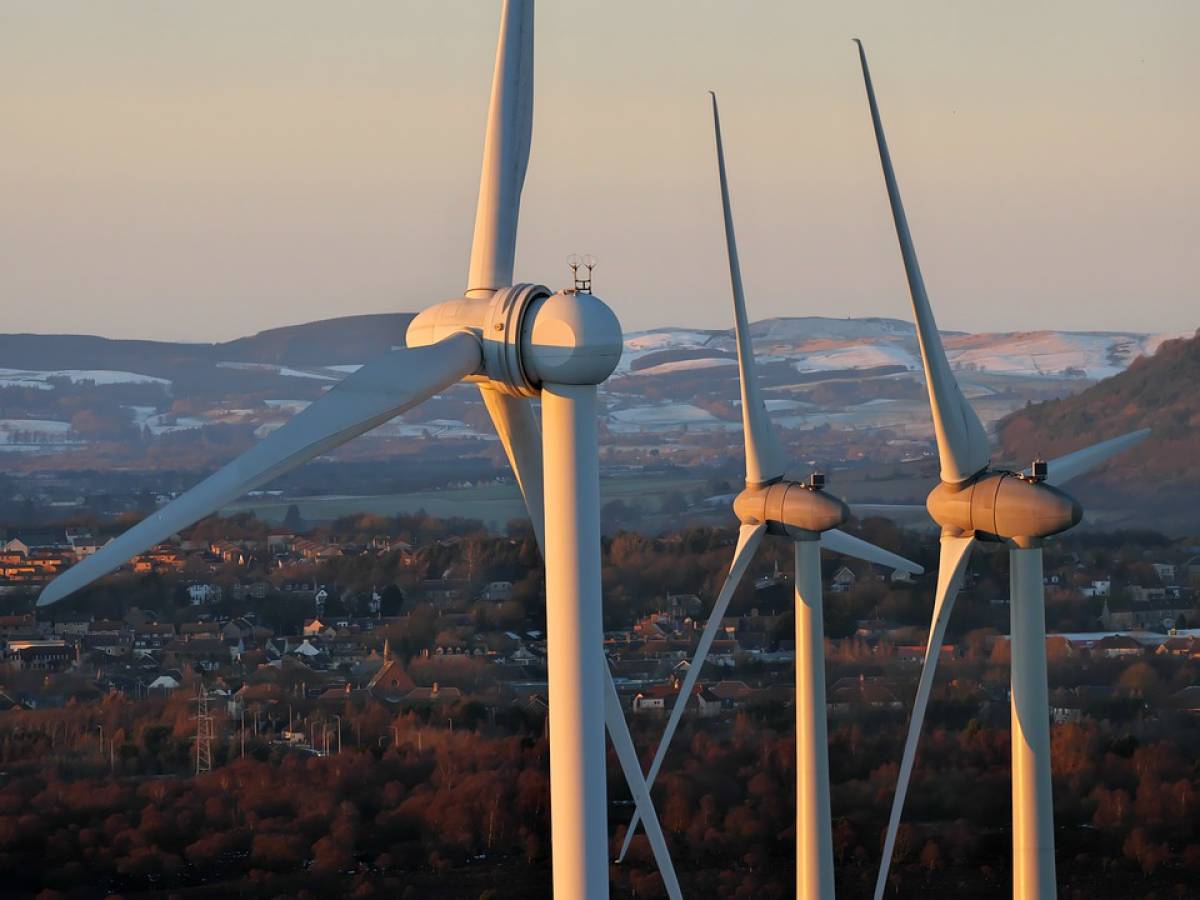Wind Energy Could Be the Future for Meeting Business Energy Requirements

Wind mills wind farm Scotland Britain power energy. Photo: Max Pixel.
The world has already found some innovative ways to sustainably produce energy without the reliance on coal, oil, and natural gas. However, there is still more to be done.
Other than the changes we as individuals make, businesses need to adapt their operations to use greener sources of energy – such as wind power.
With the former UK Prime Minister Boris Johnson pledging that by 2030 offshore wind farms will generate enough power for every home in the UK, the race is on to make wind energy the future.
However, what does the future look like for businesses? Here, we discuss if wind energy will be the future for meeting UK business energy requirements.
Wind energy: the pros and cons
In short, wind energy relies on wind turbines to generate electricity. As the blades turn, they rotate a generator and a shaft that converts the energy into electricity.
The UK is one of the best places in the world for wind-powered energy. So, why is it not being used more often by businesses?
Here, NorthernPowergrid.om ;discuss the pros and cons to businesses for using wind energy as an electric connection.
The pros
- It is one of the cleanest forms of energy. Since no fossil fuels or other pollutant forms of energy are required, wind energy will provide your business with clean, low carbon energy.
- Offshore wind farms can produce a high amount of energy since there is more wind at sea. For businesses, having a reliable supply of energy is vital to prevent delays in operations.
- Offshore wind farms provide reefs for fish. Not only do they have very little impact on wildlife, but they are also an incredibly green way to generate energy.
- In 2019, a ‘Renewable Power Generation Costs in 2019’ report found that it cost more to keep coal plants in operation than to run onshore wind farms. Other than the environmental advantages, there are also cost advantages too.
The cons
- For offshore wind farms, these can be expensive to construct and to repair.
- When the turbines are not running, they rely on fossil fuels for backup. This means wind turbines don’t always provide absolute green energy.
- Wind turbines impact views. Since onshore turbines tend to be built on the top of hills, these can be seen as negative blights on some landscapes.
Wind energy and business energy: the requirements
With the pros and cons considered, the environmental aspect of wind energy undeniably has many benefits. However, whether wind turbines are the future of energy for businesses comes down to more than just the environmental factors.
The overall question is whether wind energy can produce enough to supply businesses with power all year round and how the energy sector balances its electricity general profile in a low carbon way
In terms of how much electricity UK businesses require per year is as follows:
- Micro-sized businesses can require between 5,000 to 15,000 kWh each.
- Small businesses can require between 15,000 to 30,000 kWh each.
- For medium businesses, these average at 30,000 to 50,000 kWh each per year
As for how much gas UK businesses consume per year, the average varies depending on the size of the business too:
- Micro-sized businesses require around 10,000 kWh each
- Small businesses require approximately 25,000 kWh each
- Medium businesses need around 45,000 kWh each
The level of output per wind turbine varies depending on its size and how fast the wind is travelling through the rota. The more wind, the more energy.
An onshore wind turbine with a 2.5-3MW is thought to produce around 6 million kWh of energy per year, supplying on average 1,500 households with electricity.
So, is there enough wind energy for UK businesses?
The average UK household requires around 3700kWh of electricity per year and 12,000 kWh of gas. To help supply this, there are 8,600 onshore wind turbines and 2,300 offshore wind turbines currently in the UK. In comparison to the amount of energy businesses require on average per year, it's clear that more wind turbines are needed to generate enough power to cover both homes and businesses.
However, that’s not to say this isn’t an unrealistic goal for the UK to achieve. With the Government setting numerous targets to help lower the impact of climate change, a huge part of this is finding more environmentally friendly sources of energy.
Although initial investments might be high, in the long run, wind energy can cost less than the likes of coal-powered energy as mentioned above. Therefore, it is financially possible for wind energy to be the future power for businesses.
In terms of reliability, there has been some issues raised with this. If wind-powered energy causes delays when supplying businesses with electricity and gas, this could severely impact production levels for businesses. Therefore, other sustainable energy resources, such as solar panels, may be more beneficial.
Or, another solution to this is to strategically place wind turbines in specific places. For example, since offshore turbines are exposed to higher speeds and consistencies of wind, investing in more wind farms at sea will help prevent the issue of power inefficiencies for businesses.
There is no possible way to give a definitive answer about what the future holds for energy sources for businesses. However, one thing for certain is that switching to wind-powered energy is a possibility and a mix of local carbon energy generation technologies will be key to achieving the balance needed to power our lives.
With more investments in the efficiency and scale of wind farms to provide enough power for businesses, the future could be a much greener one.




















![How Bloodborne Pathogen Training Works for Businesses [node:title]](/sites/default/files/styles/video_thumbnail_bottom/public/man-woman-white-robes-ppe-tube-glass-blood-slide.jpg?itok=2Pjvk9J0)